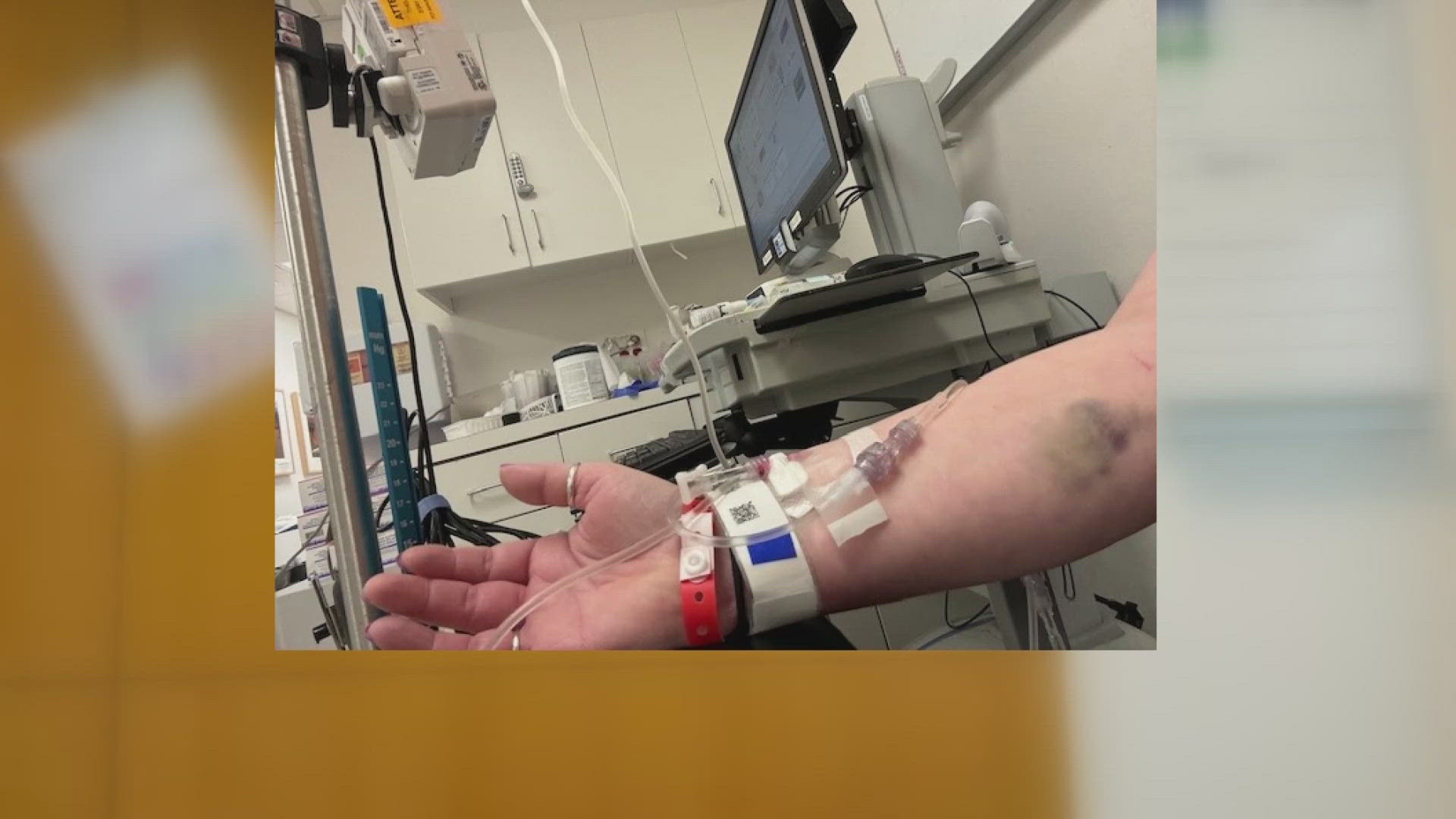CLEVELAND — Cat Scratch Fever: if you were a Ted Nugent fan in the 70s, you probably remember the song. Amanda Naylor does, and that's all she thought it was, just a song. Until she learned it was a real thing.
Amanda is the 7 p.m. news producer at WKYC and wanted to share her story because she knows that even though what happened to her is rare, it can still happen.
Amanda is a huge cat lover. She is currently owned by Bert and Ernie. Ernie is the feisty one. Of course they play, they scratch and they bite occasionally. She never gave it a second thought. In fact, she never even noticed, until one morning two weeks ago.
"I woke up and it felt like my skin was on fire. I looked down and there were blisters growing up my arm and I knew we had a very big problem," Amanda said.
She headed to urgent care and was sent home with antibiotics.
The next morning was quite different.
"I was sweating but I was freezing, I had a temperature and I felt awful and I looked down and my arm had gotten worse," Amanda said.
This time she headed to the Emergency Room at Cleveland Clinic's Hillcrest Hospital. She says the doctors were shocked when they saw the large blisters on her arm and even started taking pictures. That's when they called in the Infectious Disease experts for help.
Before she knew it, Amanda was admitted to the hospital, getting an IV filled with nearly every type of antibiotic available because they couldn't wait for the blood cultures to come back because the infection was moving so fast.
"They asked me if I had my will prepared, I was terrified," Amanda said.
The answer came the next day.
"This is Cat Scratch Fever and it's very serious, and all I knew was that stupid song but she said 'No, this is really a big deal,'" Amanda said.
The reason is because Amanda is also battling Multiple Sclerosis and is immunocompromised. She believes she likely got scratched shortly after one of her infusion treatments when her immunity was even lower, making her more susceptible.
Cat scratch fever is caused by the bacteria Bartonella Henselae, spread by fleas that cause a blood infection in the cat who then spread it to humans through their saliva when they bite or scratch.
"It's not a problem for cats, usually it's not a problem for humans, but occasionally it can become a disaster," Amanda said.
Common symptoms include bumps or cysts on the skin, swollen lymph nodes, muscle, bone or joint aches, fatigue, weight loss or loss of appetite. In extreme cases, such as what Amanda was at risk of, the bacteria can attack the heart, eyes, liver, spleen or brain or cause a blood infection known as sepsis.
Fortunately, Amanda's case was caught in time and now she's back at work, although the scars on her arm are a constant reminder of what she went through, and she's still taking the antibiotics for another couple of weeks.
There is a risk she can get it again, so she's taking precautions around her cats and playing with them at further distances, especially after infusion treatments, but there's no way Bert and Ernie are leaving home.
Around 12,000 people get Cat Scratch Fever each year in the U.S. and about 500 are hospitalized. It's more commonly found in kittens and feral cats and kids under 15 are more susceptible. In most cases, cat scratch fever goes away on its own.

